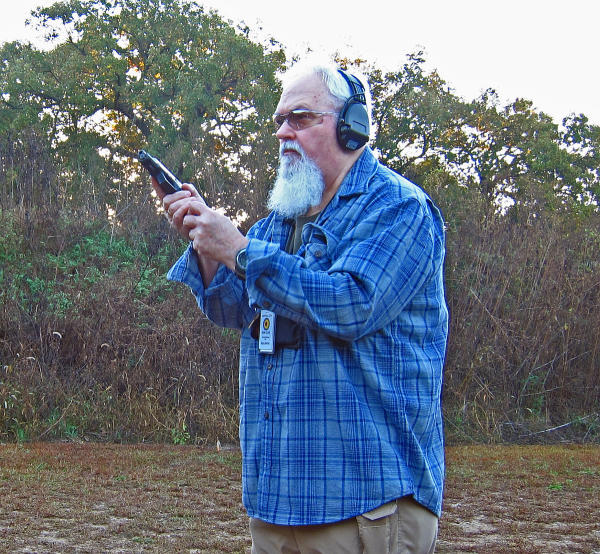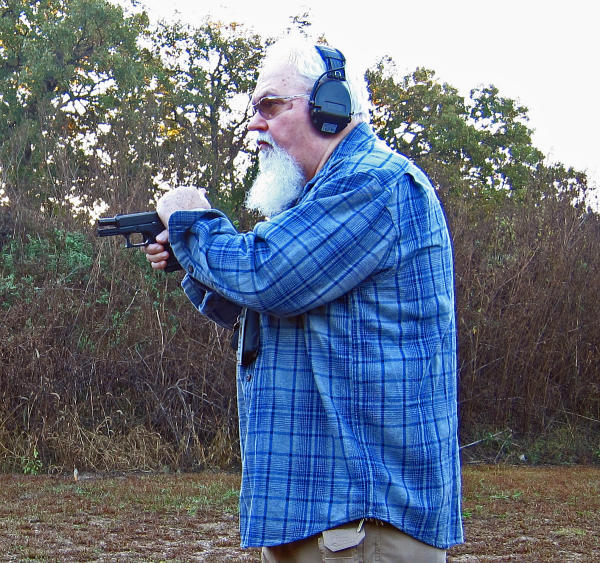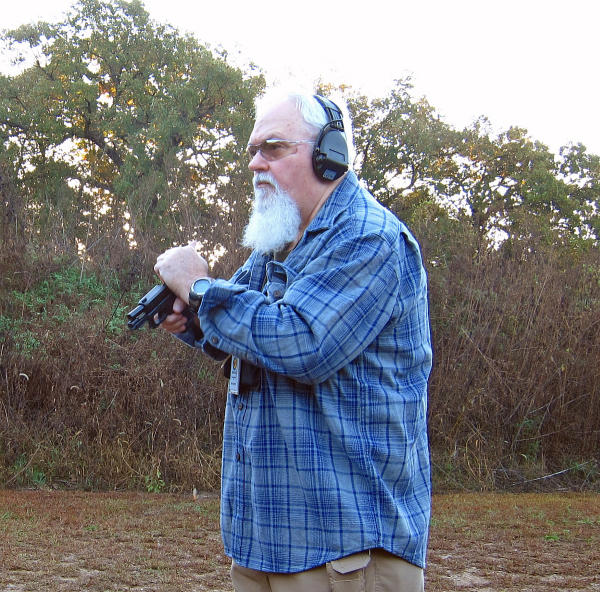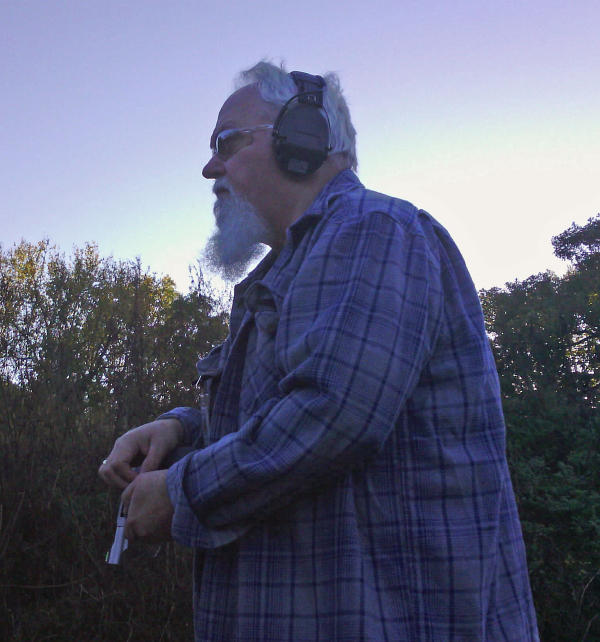
For the fourth year, Lone Wolf Distributors has contributed a custom-built pistol for the Bridger Bucks Chapter of the Mule Deer Foundation’s annual banquet raffle. This year’s pistol went for $2,500, a new record.
Editor's Note: This feature is from our companion service, Shooting Wire.

Kathy Jackson, on her Cornered Cat Facebook page, raised a question based upon two springboard issues. In my words, the question is “When the firearm (carbine/pistol) goes dry and a quick reload is needed, is the so-called “workspace” reload unsafe? It apparently violates Rule 2, does it not?”
The question arose because (1) a news story about a bullet that escaped from a range struck an 8-year old boy and (2) the result of her examination of a large number of unintended discharge reports from gun forums and other sources. Her analysis is that there were many of those cases that resulted from so-called ‘slam fire’ where a gun discharges when the bolt/slide slams home. Many others were due to people new to the gun “suffer a sympathetic squeeze reaction and fire the gun” when causing the bolt/slide to go forward.
The environmental question – whether rounds hitting an earth berm ‘escape’ or bounce off the property – was appropriately disregarded in this context: we’re talking about behaviors, trained and practiced behaviors and not range design.
As to the “slam fire” phenomenon, home “gunsmithing” is often the culprit. A video residing on Youtube shows a competitor on an indoor range “making ready.” When he dropped the slide, the pistol fired.
As he didn’t have the gun elevated, there was no serious damage and the round apparently didn’t leave the range. My detectives once worked a gunshot fatality at a range where a semi-auto rifle, home “gunsmithed,” went out of control on a benched shooting position. The shooter didn’t have a good hold on the gun, dropped the bolt, the gun fired and continued to fire as it came free from the shooter’s grasp creating a through-and-through wound through the thoracic cavity.

The “home gunsmith” – who was not the victim – wasn’t charged but it took a careful case review and presentation to the District Attorney to cause the case to come to that end. In that case, justice was served for reasons I won’t go into here.
The ‘slam fire’ can also potentially be caused by a grievous lack of maintenance.
On Kathy’s Facebook pages, the discussion was long and rancorous, people seemingly intending to take part of her concerns out of context and to complain about somehow taking “effective reloads” away from everyone.
That’s “social” media.
For proper analysis, let’s examine the concern. It’s a little thing I like to call Rule 2. “Never let the muzzle cover anything you’re not willing to destroy.” That’s a good rule, a gold standard, yet many of the people in the discussion were willing to have exceptions to it. There are exceptions of course.
You’ll notice the rule refers to “covering” instead of “pointing at.” There’s a reason for that distinction. Pointing a gun in an unsafe direction implies a deliberate, considered act. Allowing the muzzle to cover something you don’t want shot more implies thoughtlessness; a careless behavior. That’s the pattern we see over and over in “accidents.”
Pointing is an action: directing the muzzle at an objective. Allowing the muzzle to cover something is often done without conscious recognition of the problem.
What is a safe direction? Manny Kapelsohn once counseled me in one of his famous IALEFI “Manny Moments” as to the most appropriate definition for our area of endeavor.
The safe direction is “one in which an unintended discharge will not cause personal injury and only minor property damage.” Again, that’s drawn a little broadly but it gets to the point: minor personal injury is a huge problem – until you’re ‘in the fight,’ then it becomes a matter of competing harms. Minor personal injury can be ripped and torn flesh with minor penetration of spall from a round going into cement.
What’s the safe direction “out in the world?” We talk about closing ranges, but what about gearing up at home? What about chamber checks and muzzle direction when gearing up for the day?

The safest direction is the best option – and it’s something that requires attention before it’s needed. Where does the muzzle go if that emergency reload is in the Biggie Mart parking lot at 8PM Friday evening? It’s contextual, a matter of environment.
Is it a problem when is the muzzle elevated during the reload? When the gun is out of battery – ? Take a look at reloading the double action revolver; to empty the gun, we all recommend opening the cylinder and then elevating the muzzle to the sky to dump the empties with a sharp slap to the ejector rod. With an auto pistol, if the slide locked open the gun stays level as we reach for the spare and press the magazine release – again, “allowing gravity to be our friend.”
If the slide’s locked open, the gun can’t fire. When inserting the magazine, consider the ‘auto-forward’ phenomenon: pressing the magazine home with the enthusiasm to cause the slide to slam forward. If you have a gun with such tendencies, consider when the muzzle (1) goes level with the backstop or (2) directed into the deck.
When dropping the slide on the loaded magazine – whether administratively loading or in an emergency reload – consider muzzle direction. Saving a fraction of a second is fine as long as a round doesn’t leave the range or otherwise create a harmful situation.
Saving a fraction of a second while assuming the risks – for everyone, not just you – is foolish economy.

Karl Rehn, KRTraining, studied the issue of reloads from the standpoint of muzzle control and time to accomplish a reload. His analysis, quite good, is at the link.
The Reader's Digest Condensed version is -- drop the slide/bolt in accordance with Rule 2 , in the safest direction . . . whatever it is in that environment. It's not about speed, it's about doing no harm. Chasing the fast reload, like chasing short split times, is an interesting game but it’s deliberation and doing it right that will carry you through the bad times.
Don’t believe me? See Paul Howe in this Panteao Productions video.
- - Rich Grassi
The Tactical Wire in error, or wish to be removed from the mailing list, click here to be removed.














